
Since everyone was talking about Malays "dressing beautifully again", it's as good a time as any to look at historical Malay clothing. This won't go into detail but I just wanna give people a general idea of how pre-modern Malays dressed because I'm sick of the anachronisms
Unfortunately there's been relatively little study on this topic, and the average person is left to make assumptions. I've seen Malay period dramas where the men are wearing the same baju they bust out for Raya. But I'll deal with that later 

In any given culture, we know of the historical clothing from a number of sources, like descriptions, illustrations, statues, etc. These sources will also reflect changing fashions 






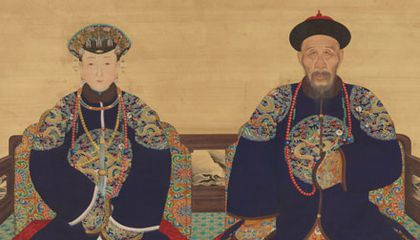
Much of this is absent in Malaysia. Paper doesn't last long in our climate, and our stone is inconvenient for carving. We have to rely on other sources instead, sometimes looking at neighbouring countries
https://twitter.com/SEAstorian/status/1278595600787714049?s=19
Prehistoric Malays would have originally made clothes from natural materials like beaten bark. Bark-cloth attire is still made by the Mah Meri. Silk and cotton was obtained from China and India in exchange for goods like spices, camphor and sandalwood 
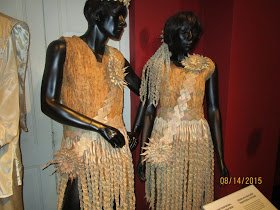
In ancient South and Southeast Asia, as with some other parts of the ancient world, clothes were usually tied or wrapped about the person, rather than stitched. We can see this in the sarong and kemban 





Chinese and Arab sources describe the people of Langkasuka as wearing sarong (or as the Arabs called it, "a single piece of cloth") around the lower body. They kept long hair that fell disheveled on their backs
In this 6th-century Chinese illustration of an ambassador from Langkasuka, we see once again that fabric is wrapped around the lower body. This is known as sampot, and it was common to both South and Southeast Asia 

The kings of Srivijaya wore gold ornaments and a gold tiara. All the nobility probably dressed in the same basic style. The king of Chitu in northern Malaysia is said to have worn rose-coloured garments, with a necklace of various jewels 

Toplessness for both men and women was common among Malays, as in other parts of South and Southeast Asia. Female breasts don't appear to have been considered "private" any more than a man's chest, but the lower body was covered for both
thebalitimes.com/the-island/cov…
thebalitimes.com/the-island/cov…
The shoulder cloth or sebai appears early and was worn by men and women throughout the region. Though less common in Malaysia today, it's still a prominent part of national dress in neighbouring countries 



Toddlers would be naked or cover their genitals with a piece of metal or coconut shell, called a caping. The British called this a "modesty piece" 

The Chinese describe men as wearing a square kerchief around the head, with exaggerated corners. This appears to be referring to the tanjak or tengkolok, often translated into English as "turban" 

Other headgear existed as well. Farmers and coolies would wear the conical hat common across Asia. It's called by a few generic names like topi sawah or topi petani, but the proper Malay term is terendak 

Headscarves similar to the Cambodia krama were also tied around the head, especially by the working class. In the Srivijaya era, the hair was often tied in a topknot 

As in neighbouring countries, Malays at some point began wearing sleeveless or short-sleeve tunics. We can see how this looks in wayang kulit 

The Chinese described "short jackets of coloured cloth". Some were wrap style, with one side crossed over the other and tied with a waist sash 

Human figures in Malay manuscripts and puppetry often have upturned edges and corners. Farouk Yahya called this is a "forgotten" characteristic of Malay clothing, though we can still see in other Southeast Asian countries 


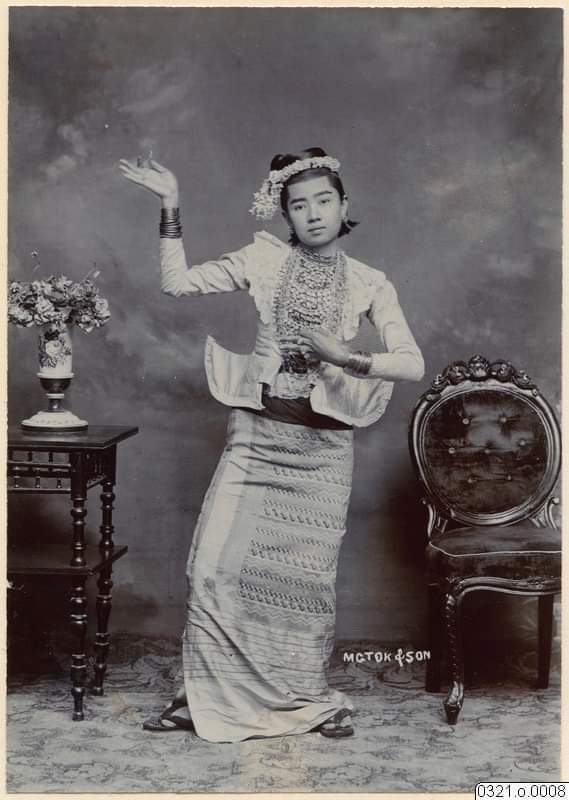
Trousers appear to have been first invented for military use on horseback, possibly in Central Asia. They were eventually adopted in other parts of the world, presumably for the same function
dailyhistory.org/When_did_Men_S…
dailyhistory.org/When_did_Men_S…
For Malays, pants could be worn with either a sash or samping around the waist. But the native sarong remained standard, at least for the average person. It was mentioned by foreigners consistently over the centuries 
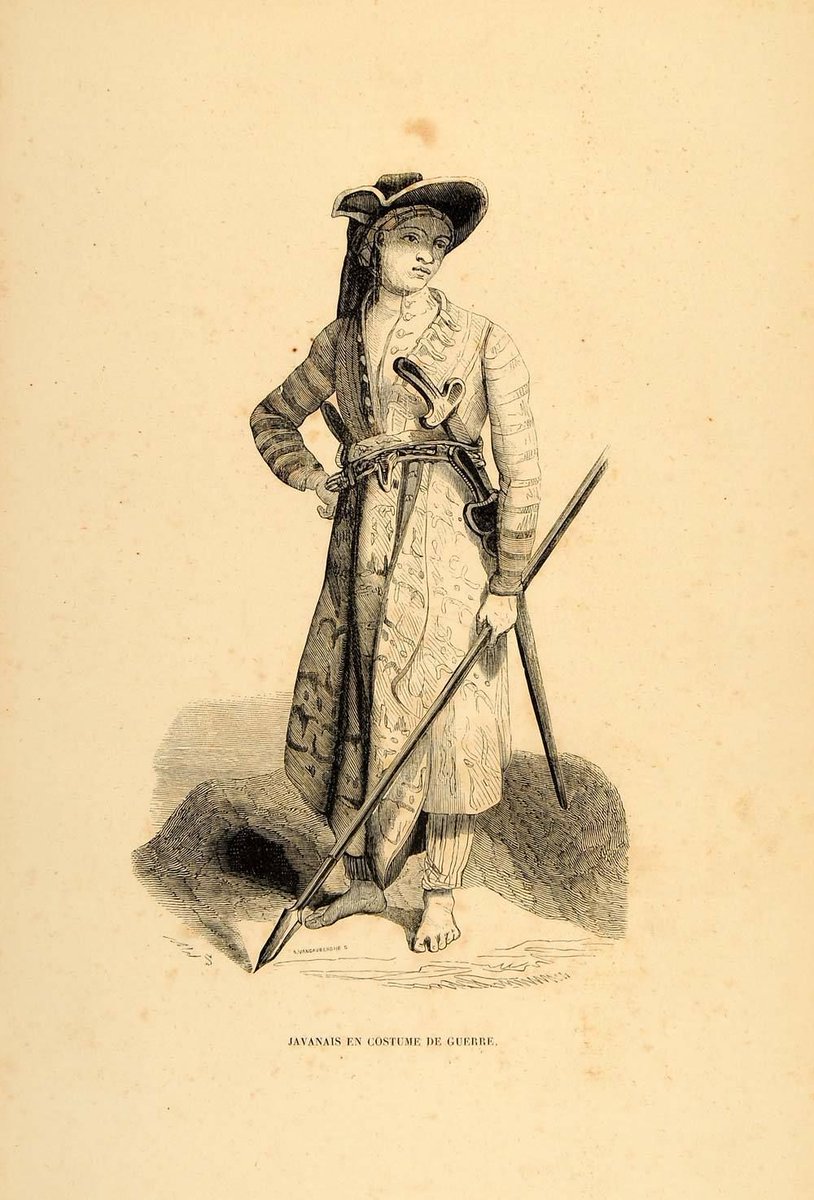
At this point we have all the components for the early form of what we today call the baju Melayu. Originally, this sort of outfit was called baju kurung, meaning "confined clothes". The term applied to both male and female attire
According to the Sejarah Melayu, it was Tun Hassan Temenggung who loosened the baju Melayu and lengthened the sleeves, bringing it closer to its modern form
It should be noted that while this was the attire of the upper class, the average person didn't necessarily dress the same way. Simple forms of body wraps remained common among, well, commoners 

Judging by Chinese descriptions, solid colours like black and white were prominent in the 14-15th centuries. The tartan patterns we're used to today were popular by the 19th century. So can we stop seeing those patterns in art like this? 

The baju Melayu came into its present form in the colonial period, with full-length sleeves and pant legs. The buttons and pockets are believed to have been a European influence 
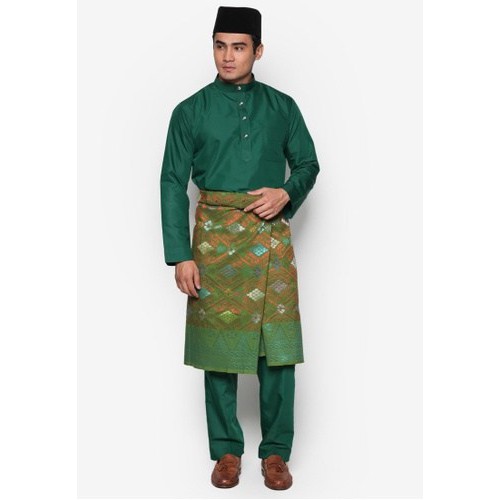
Now I'm not saying that those characteristics didn't exist prior to colonisation (except maybe the pockets), but they weren't yet standard. The length of sleeves and pant legs varied before that
The songkok traces back to the Ottoman fez. It was adopted in South Asia, particularly in its unadorned black form. Known in Hindi as Rumi topi (literally "Roman hat"), it became symbolic of the Ottoman-aligned pan-Islamist movement in British India 



The songkok was introduced to Southeast Asia by Indian Muslims in the 19th century and has been consistently popular in the archipelago ever since... Leading many to believe it's much older than it really is. They didn't wear songkok in the Melaka sultanate 

Thai art from the 19th century depicts local Muslims wearing kopiah (skullcaps). It became more common in the 20th century. Today, the kopiah and songkok have far overtaken the native tanjak in popularity 

Now let's look at women's attire. As previously noted, ancient women would wear the sarong either topless or with kemban and sebai. The early kebaya is essentially a blouse worn over the kemban. I believe this to be a Chinese innovation, since similar clothing existed in China 

The word kebaya is of Arabic origin, via Portuguese. The outfit itself is commonly linked to Java. Such was its popularity before the mid-20th century that even the European colonists wore it 

The development of the kebaya coincided with the introduction of Islam, but contrary to popular belief, I don't think it was a specifically Muslim influence. First of all, it more closely resembles Ming-dynasty clothing designs than the abaya 
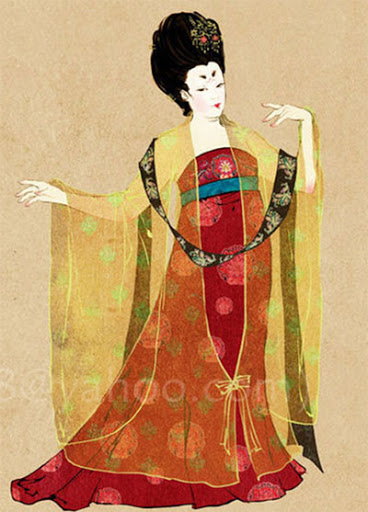
Second, the classic kebaya was often tight and made of thin material. It's not the sort of outfit you'd create if the intention was to conceal the figure 

And third, the kebaya and related outfits were not at all unique to Muslim communities. They were worn by non-Muslims in Java, Bali, Myanmar, etc. It's still part of the nyonya identity 





Different styles of kebaya were developed over time, some of which might have had European or Arab influences
m.brilio.net/en/wow/from-co…
m.brilio.net/en/wow/from-co…
At around this period, Malay women also wore a two-piece outfit which could be seen as the precursor to the modern baju kurung. It was sometimes adorned with a sebai across the shoulder 

The baju kurung consists of a blouse and a sarong. Judging by illustrations, the early form has tighter sleeves and a significantly shorter top. Even so, it's decidedly more "modest" than the kebaya
The baju kurung as we know it is a much later invention, created in 19th-century Johor through the influence of looser Arab and Indian-Muslim attire, which can be seen in the collar. The teluk belanga version is considered the original 
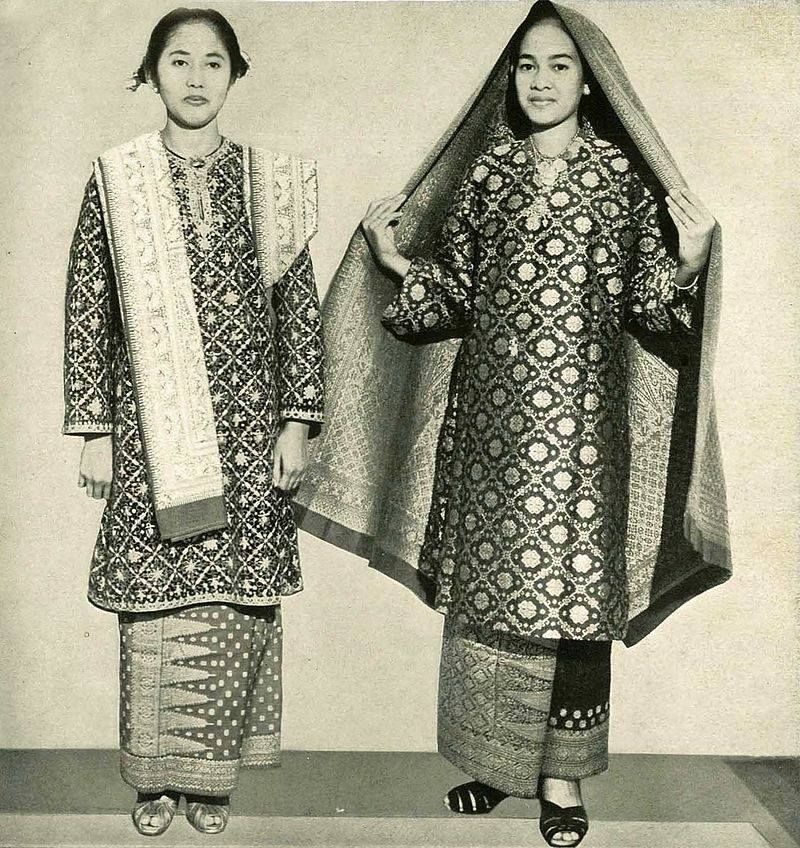
Many regional variations were developed since then, from the Thai-influenced baju kurung Kedah to my personal favourite, the baju kurung Perak which looks very old-school with its sampin
nurulfatehah96.blogspot.com/2015/10/jenis-…
nurulfatehah96.blogspot.com/2015/10/jenis-…
Now that some young Malays consider the traditional kebaya "too sexy" (quite the opposite of conservatism despite what they call themselves), the baju kurung has overtaken the kebaya in popularity. It's now considered the iconic Malay women's outfit 

But I will always consider kebaya as the more characteristically "Malay" of the two. It's older, it's directly related to the ancient kemban, and versions of it exist in other parts of Southeast Asia, making it distinctly regional. Just my two cents 

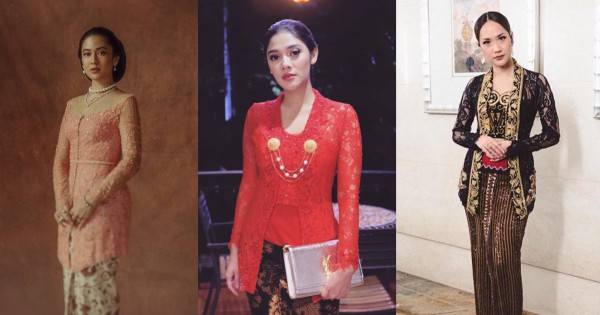

Unfortunately the topic of headscarves among Malays has become a controversial one, and I have to get into it here once again. Most Malay women, Muslim or not, weren't historically described or depicted as covering their hair
It's believed that some pre-colonial women would cover their heads with the kelubung, but this doesn't appear to have been done as a religious obligation
https://twitter.com/uglyluhan/status/1090174191662379009?s=19
Southeast Asian men (both Muslim and non-Muslim) were sometimes described as wearing headscarves, which was more like a bandana than a veil. This is still worn by Cambodians of all religions and genders 





Even when the head was covered, the shoulders were often open. In illustrations of Southeast Asian Muslim women, the clothing was certainly modest and the head was covered, but there's no effort to hide the hair 

Neocons too young to remember the days when tudung was less common have attempted a counter narrative after discovering photos like the ones you can see here
https://twitter.com/uglyluhan/status/1090173087209840641?s=19
Their assumption is that Malay women in colonial times covered their whole bodies, except in cities where women were more westernised, similar to Afghanistan or Iran. And yet the opposite appears to be true 

It's in the villages where women donned the kelubung and sarong, going out in public with their shoulders open 



Rural women certainly did cover their heads, but the Arabised style of hijab and purdah was mostly seen in cities where Malay men wore western suits and were most likely to come into contact with foreign Muslims
https://twitter.com/uglyluhan/status/1058422166448795648?s=19
Now let's go further into some of the misconceptions and questions that have been floating around. If you're interested in traditional Malay clothing, you've probably come across some videos and other online sources explaining the "hidden meaning" behind the baju Melayu 





As interesting as these may be, most are based on conjecture and modern interpretations only dating back a few years. I'll go through them one by one
"Malays began wearing shirts because Islam made them more sopan"
Not only does such a bigoted statement imply that non-Muslims are uncivilised and 'tak sopan', it also ignores the fact that shirts were worn by non-Muslims around Asia and elsewhere
Not only does such a bigoted statement imply that non-Muslims are uncivilised and 'tak sopan', it also ignores the fact that shirts were worn by non-Muslims around Asia and elsewhere

We don't know precisely when Malays started wearing shirts. It's true that most pre-Islamic Malays were shirtless, but the same could be said of India where shirts were worn as far back as the Satavahana dynasty
I wouldn't even go as far as saying that shirts became more common among Malays because of Islam. Similar changes in dress can be observed even in neighbouring Buddhist countries. Even the Mah Meri wore shirts. I see no reason to believe Malays needed Islam to put a shirt on 



"Malays changed their style of dress ever since the founding of Islam in the 7th century"
Islam was founded in the 7th century, but that doesn't mean Malays were Muslim since then, or that they were changing their fashion because of the religion
Islam was founded in the 7th century, but that doesn't mean Malays were Muslim since then, or that they were changing their fashion because of the religion
https://twitter.com/uglyluhan/status/1292103335680466945?s=19
We know conclusively that Malays in the peninsula have been converting to Islam during the 13th century, and it didn't even become dominant til around the 15th century
https://twitter.com/uglyluhan/status/1292107531922284551?s=19
And even then, they were slow to change. Malay Muslim men in the late 16th century didn't always cover their thighs. Muslim women from 15th-century Semudera were naked from the waist up 

The modesty police misinterpret this every time I bring it up so let me clarify. I'm not saying Malay women can't wear hijab. I'm speaking about what was done historically
Regardless of your politics, the fact is that most pre-colonial Malays put little effort into observing the concept of aurat as it's interpreted today. Even when the head was covered, the hair was usually visible, and the clothes were often still revealing
This image of Kelantan women's clothing from the 13th to 21st century has often been cropped in dishonest articles and FB posts as proof that pre-colonial women covered themselves. Looking at the full picture tells a totally different story 



"All Malay men wore baju Melayu and women wore baju kurung"
Baju Melayu just means Malay clothes. Going by that definition, yes all Malays were wearing 'baju Melayu'. But if this means that Malays all dressed in the baju Melayu and baju kurung we know today, then no
Baju Melayu just means Malay clothes. Going by that definition, yes all Malays were wearing 'baju Melayu'. But if this means that Malays all dressed in the baju Melayu and baju kurung we know today, then no
Malays wore more than just one type of outfit, both men and women. This is a man and woman from 16th-century "Temquigui" (丁磯嶷 Dingjini in Mandarin), believed to be Terengganu 

"Baju Melayu is 700 years old"
This number comes from the passage in the Sulalatus Salatin that says Tun Hassan Temenggung altered the design of the baju Melayu. This happened in the 1400s, which would make it around 600 years ago in 2021
This number comes from the passage in the Sulalatus Salatin that says Tun Hassan Temenggung altered the design of the baju Melayu. This happened in the 1400s, which would make it around 600 years ago in 2021
And as we've already seen, the baju Melayu at that time was recognisable but not the same as what we wear at Raya today. The implication that the modern baju with pockets and buttons was worn 600-700 years ago is false
"Malay shirts were based on the Arab jalabiyah"
This might be true if you're talking specifically about the baggy modern style from 19th-century Johor. Shirts already existed before that, and were not necessarily an Arab introduction
This might be true if you're talking specifically about the baggy modern style from 19th-century Johor. Shirts already existed before that, and were not necessarily an Arab introduction

As we've already established, older styles of Malay shirts aren't even similar to Arab attire, and bear a greater resemblance to the shirts of neighbouring Southeast Asian countries 

"The pants of the baju Melayu are Turkish"
The Malay word for pants, seluar, comes from the Persian salwar, a term that exists in Indian and Turkic languages as well. It's believed Malays adopted them from the Middle East & Persianate cultures of South and possibly Central Asia
The Malay word for pants, seluar, comes from the Persian salwar, a term that exists in Indian and Turkic languages as well. It's believed Malays adopted them from the Middle East & Persianate cultures of South and possibly Central Asia
Central Asian languages are mostly from the Turkic family. The cultures in the region were heavily Persian-influenced. I assume this is where the idea of "Turkish" pants comes from. But Malay pants are characteristically Southeast Asian
Like in other parts of the region, the earlier Malay style of pants came down to the shins or just past the knees rather than all the way to the ankles. We can still see this in some silat uniforms. It's unlikely that it was specifically Turkish 

"Do the buttons and pockets on the baju Melayu have religious significance"
The buttons and pockets were a much later addition. Maybe they really were designed with some Islamic symbolism in mind, but I'd like to see a source for it
The buttons and pockets were a much later addition. Maybe they really were designed with some Islamic symbolism in mind, but I'd like to see a source for it
Whatever the case, the number of buttons wasn't always standardised. I personally never heard the claim about their meaning until only a few years ago, and that only came from blogs. But hey maybe that's just me 

This doesn't mean that the number of buttons and pockets can't have religious significance to people today. If the five buttons remind you of the rukun Islam, then more power to you
But we must be able to distinguish between a historical belief and a modern reinterpretation. And honestly it sounds suspicious. Though not as ridiculous as the next one
"The sampin represents a man's aurat"
I'm willing to give a chance to the number of buttons thing, but this one is 100% untrue. This BS originated as conjecture in some well-meaning blogs a few years ago, but has since been accepted as fact
I'm willing to give a chance to the number of buttons thing, but this one is 100% untrue. This BS originated as conjecture in some well-meaning blogs a few years ago, but has since been accepted as fact

The claim goes that Malay men were wearing trousers but put a sampin over it to make sure their aurat is completely covered. If anything, it was the other way around
This image isn't accurate. There's no evidence that Malays gradually lengthened sleeveless tunics. But it does illustrate one thing; Malays were wearing sarong first, and then adopted pants afterward. The sampin could be seen as a short sarong or a very wide waist sash 

In former times, Malay men didn't always wear a sampin with their baju. It could be replaced with a simple sash, as in other parts of Southeast Asia. Many silat schools still use a sash in their uniform instead of a sampin 

Take a look at some old photos of men with a shorter sarong. It's easy to imagine Malays dressing this way, and adding pants underneath. That's essentially the origin of the sampin 

One of the main reasons for writing this thread was to debunk the modern assumptions on historical Malay clothing. One of these assumptions is that what's considered "cultural" Malay attire today is how Malays always dressed
I've had enough of children's books telling stories set centuries ago but the characters dress like your uncle from Kampung Pauh with songkok, buttoned baju, and the beards, don't make me bring up the beards again 





Same goes with Malay-inspired fantasy art. But if you want Malay fantasy that's on par with other cultures, get your time periods right. Songkok and tudung fit in medieval Malay fantasy like a baseball cap fits in LOTR. It's fantasy so you can do whatever, but just be aware of it
The other assumption is that every change in Malay culture must have been related to Islam. Whether long sleeves or sampin, it all existed among non-Muslim Southeast Asians. If the baju Melayu is so Islamic, why is the same thing worn by Buddhists in Thailand and Myanmar? 

We've been so conditioned by the globalist stereotypes of traditional attire, as if each culture had only one style of dress. And if that's all you look at, they might seem very different. But look beyond that and you'll find more similarities than differences 



Tell me you don't see the resemblance to Malay clothing. It's odd that the same people who normally deny any outside influence on Malay culture are claiming an Arab origin for clothes that are actually very Southeast Asian 

Sources:
Sulalatus Salatin
Yingyai Shenglan
Denys Lombard
Paul Wheatley
W.P. Groenveldt
Anthony Milner
Ria Pentasari
Sulalatus Salatin
Yingyai Shenglan
Denys Lombard
Paul Wheatley
W.P. Groenveldt
Anthony Milner
Ria Pentasari
• • •
Missing some Tweet in this thread? You can try to
force a refresh




